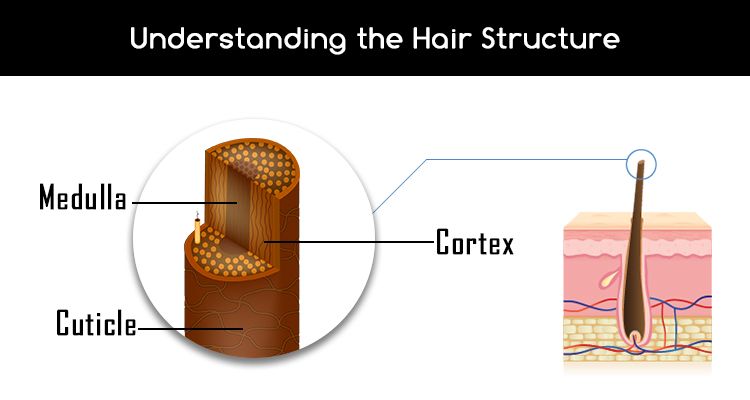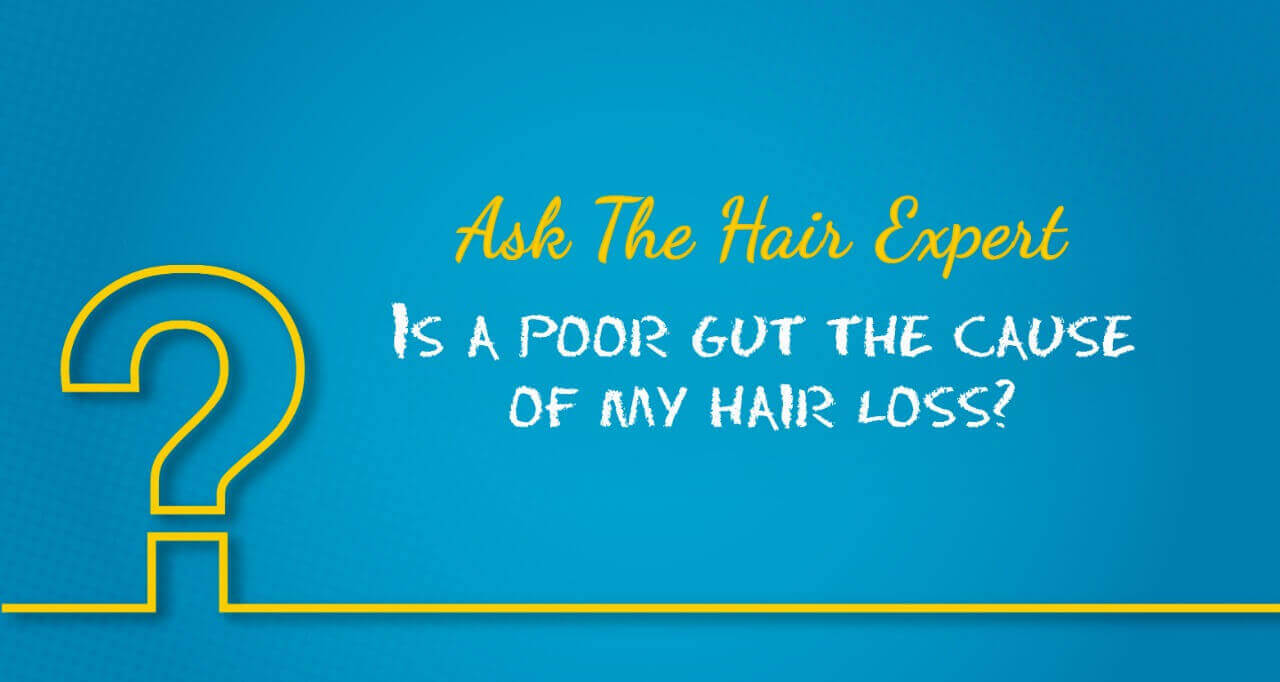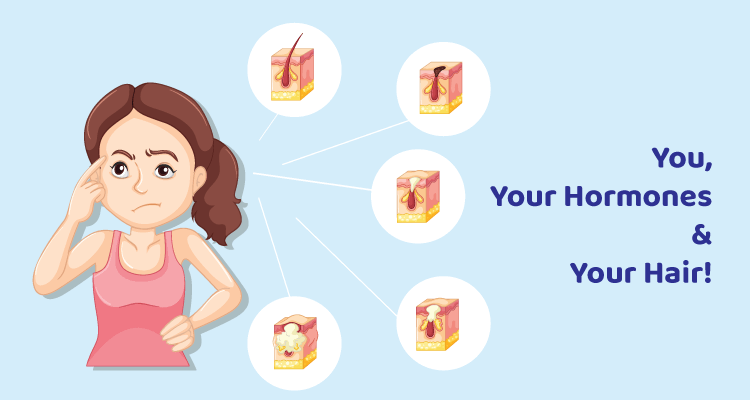Soft, silky, long, short, rough, dry, dull and more! We use several adjectives to describe our hair. But it’s all on the basis of its external appearance, isn’t it? We also define our hair problems from what we understand of it from the outside, don’t we? We look upon the www, we ask around family & friends, we try new shampoos & oils…the list is long.
But, have you ever wondered what Hair is made up of or what is inside each hair strand? Perhaps it’s something from the inside which is causing your hair worries?
A detailed understanding of your hair structure can help you understand what your hair needs on a daily basis. It can help you understand the hair problems that you seem to be facing, better and thereby, tackle them better.
Hair Anatomy – A simple overview
Hair is an appendage of a layer of skin called the epidermis (the outer layer). It consists of two distinct parts namely the hair follicle and the hair shaft.
The Hair follicle is the basic unit for the generation of hair. It can be defined as ‘the sheath of cells and connective tissue which surrounds the root of a hair’.
Simply put, the hair follicle is a small root embedded in the epidermis. It is an important part of the hair structure as the hair grows from the follicle. Hair can grow back if the hair follicle is not dead. Incase the follicle is dead, hair can never grow back.
On average, in an ideal scenario, humans have approximately 80,000 – 150,000 follicles on the scalp. The Hair follicle has a life cycle of its own with continuous growth and rest sequences. It is commonly referred to as the Hair growth cycle and it can be divided into phases called Anagen (growth phase), Catagen (transition phase) & Telogen (resting phase).
The duration that your hair strand is in each of these growth and rest stages may depend on various endocrine, vascular and neural stimuli. It will further depend on where the hair strand is and factors such as age, gender and diet + lifestyle habits. As you grow older, the rate of hair growth and your hair density tend to decrease.
Ideally, 85-90% of our scalp hair is in the anagen stage, 1% in the catagen phase and 10-15% in the telogen phase. Anagen phase may last for about 2-6 years, catagen phase for about 2-3 weeks and telogen phase for about 3 months. This is only an approximation and differs from one person to the other as mentioned above.
The Hair shaft, simply put, is the hair strand that is visible to you above your scalp. It consists of a cortex, cuticle cells and a medulla. Let us delve a little deeper into this structure of the hair.
What’s on the inside? – Understanding the Hair structure
Hair is actually made up of a structural protein called keratin. This is the same protein that makes up hair, nails and the outer layer of skin. It protects epithelial cells from damage or stress. It is fairly strong and resistant to wear & tear.

A microscopic analysis of hair shows three distinct layers. These layers that make up the hair fibre are the cuticle, cortex and medulla.
The Cuticle
The cuticle is the outermost layer of the hair structure. It plays an important role in protecting the hair from the outside environment.
It consists of small scales that overlap each other. With its tiny overlapping scales, the cuticle resembles a tiled roof and gives hair its texture. Therefore, when the scales lie flat and nearly overlap, the hair feels silky, soft and glossy. If it is damaged or broken, the hair will look dull and break and tangle easily. It is thus responsible for maintaining the texture of hair.
Cuticle needs regular nourishment in order to maintain the bounce and overall health of the hair.
The Cortex
The cortex is the second or middle layer in the hair structure, lying just under the cuticle. It consists of fibre-like cells that give hair its inherent strength and elasticity. Almost 90 per cent of hair’s total weight approximately, lies within the cortex layer. Cortex also contains melanin, the pigment that gives your hair its natural colour. When your hair turns white/grey, it indicates the loss of melanin.
The Medulla
The medulla is the deepest and innermost layer of the hair structure. It consists of the very soft keratin protein cells interspersed with spaces. The function of the medulla is believed to carry all the required nutrients to the other layers in the hair structure, the cortex & the cuticle.
What’s Hair made up of?
Hair is far more complex than it appears on the surface. It is composed of multiple layers, chemical bonds and proteins.
When you look at the overall chemical composition of hair, it is approximately 45 % carbon, 28 % oxygen, 15 % nitrogen, 7 % hydrogen and 5 % sulphur. Hair also contains 12-15% water and traces of some minerals such as calcium, cadmium, chromium, copper, zinc, iron and silicon.
The hair shaft is essentially made up of a special protein known as keratin. This is the same protein that also makes the outermost layer of skin as well as the nails in human. The keratin protein consists of amino acids that are connected together by a polypeptide chain known as the alpha helix.
This alpha helix chain is bound together by chemical bonds that give hair its special characteristics such as shine, strength, bounce, etc. These bonds are also responsible for making your hair kinky, curly or straight! Let’s understand this better.
The Hydrogen Bond
This bond is the reason why we are able to style our hair in a variety of hair-dos, the way we want!
The hydrogen bonds give flexibility, tenacity or elasticity to your hair. These are the most flexible, the weakest and easiest to break or alter. They are electrolytically controlled. Thus, they allow us to temporarily manipulate the shape of the hair. For instance, setting hair using rollers or straighteners. And any such styling is done when hair is wet because the hydrogen bonds can be manipulated or broken using water. Hair is then held in position until it dries and as it dries, the bond takes the ‘new’ expected shape.
The Salt Bond
This is also an electrolytically controlled ionic bond responsible for the strength and elasticity of hair. They are abundant in the cortex. They account for about ⅓ of the hair’s strength. Salt bonds are impacted by the pH balance of your hair. Changes in the pH balance can break the salt bonds. When the balance is stabilised and maintained, the bonds reform and remain.
The Cystine Bond
The cystine bond is also known as the disulphide bond or the sulphur bond and is perhaps the most important of all. The disulphide bonds are very strong and hold the hair fibre together.
These bonds are the most difficult to break and are responsible for giving the toughness to hair. The disulphide bonds also protect the hair from breakage.
Use of extreme heat or chemicals causes the di-sulphide bonds to break. This breakage allows the keratin chains to move around slightly and assume a position that results in reshaping of hair in the required style. Any colour change will also need this bond to be broken. Hair colours use chemicals that help break this bond, enabling the colour to seep into your hair and change.
The Sugar Bond
The sugar bonds are responsible for maintaining the moisture content of hair. Water makes almost ¼ the weight of your hair! Which is why hydration is so important. Staying hydrated will ensure that the bonds remain healthy and ensure hair’s strength.
The way your hair is composed pretty much defines the texture and style of your hair! Understanding your hair from within can truly help you choose the right hair care regimen for you, the right products and treatments. Further, it helps you understand the significance of protein & mineral intake, and maintaining the pH balance in your hair.
Certain Hair foods that are abundant in proteins as mentioned above, vitamins and minerals are essential for your hair. A balanced diet and sufficient intake of water can ensure healthy hair.
Consult a professional trichologist who’ll guide you through the right diet and lifestyle that is best for you, suitable treatments, ensuring that you avoid concerns of hair loss. Trichologists perform a thorough study of your medical history, conduct a physical examination of your hair & scalp, diagnose through hair analysis using various methods and tech such as the FCT, capilloscopy, trichogram, hair pull test etc. , further examine the hair shaft, growth window and many more such key metrics. Periodic check-ups help keep a tab on your hair’s health and well being.
Being confronted with the problem of hair loss is not a choice, but providing a permanent solution for it is indeed a choice – your choice.
A reminder as always – for all things ‘Hair’, do follow our blogs on hair loss, hair care, treatments and solutions and such other interesting hair trivia!
Connect with us on social media on the links below. Do leave your questions & comments and we will address them all.



